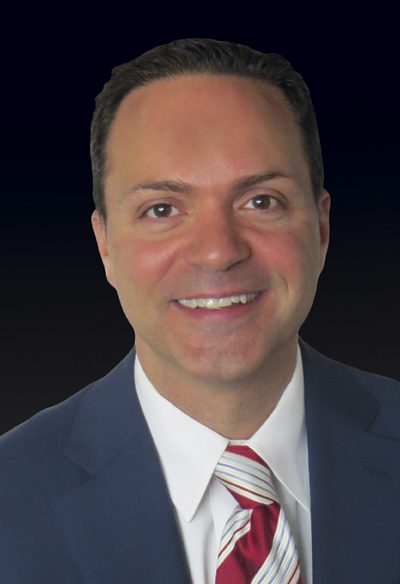RESIDENTIAL ASSOCIATION INSURANCE
It’s anyone’s guess how COVID-I9 will affect coverage for condominium and homeowners associations
By Joseph S. Harrington, CPCU
Like every other sphere of life, property and liability insurance for condominium and homeowners associations will be upended by the COVID-19 pandemic, and Bob and Ed Mackoul, father and son, will witness it from both ends of the risk spectrum.
Edward Mackoul, CEO of Mackoul Risk Solutions, indicates that his agency has been submitting business interruption claims for community association clients that have suffered revenue losses or incurred extra expenses as a result of the pandemic. The agency does this even though Ed is aware that, in the vast majority, if not all, cases, those claims will be denied.
Given the staggering economic impact of the emergency, “something’s got to give at some point,” he says. That something could be a government mandate that insurers cover business income losses from the pandemic.
Ed is well aware that carrier costs for simply responding to claims will add to upward pressure on rates. If coverage is mandated retroactively, he predicts that numerous carriers will become insolvent, and “rates are going to skyrocket,” he says. Still, he sees many attorneys urging associations experiencing loss of maintenance fees or rents to submit claims and position themselves to benefit from any recovery that may come.
Whatever happens to commercial carriers will be felt first by Ed’s father, Robert E. Mackoul, founder of Mackoul Risk Solutions but now CEO of another company he created—New Empire Group, a third-party program administrator specializing in community association coverage.
“The market for commercial insurance was absolutely hardening before the pandemic,” Bob says. “It wasn’t just condo associations. Rates were already going up 5% to as much as 100% for certain classes. Now, who knows?”

-Edward Mackoul
CEO
Mackoul Risk Solutions
New demands
The Mackouls’ observations are largely shared by Margret McBurney, vice president and program manager for community associations with Distinguished Programs.
According to McBurney, the market for primary layer association coverage was “relatively stable” prior to COVID-19; but coverage for excess liability was starting to harden, a trend she anticipates will continue through the pandemic.
“There is certainly an increase inrisk to condo and homeowner associations during the COVID-19 pandemic,” McBurney says. “Obligations for cleaning and sanitation are increased. High-touch areas such as elevator buttons, common area doors, and railings should be cleaned and sanitized every 30 minutes, and the sanitation work documented.”
That’s not the half of it, however. While staying home was the principal means most Americans used to manage their exposure to the coronavirus, it immediately raised a series of new concerns for members of community association boards.
These mostly volunteer board members were suddenly charged with deciding whether and how to close off common areas, regulate foot traffic, restrict guests or gatherings, and manage maintenance and finances as assessment revenue fell in response to the pandemic’s economic toll.
Emergency powers
In general, McBurney urges associations to follow the lead of states and municipalities in regulating access to gyms, playgrounds, parks, and other common areas where groups could congregate. This presumes, of course, that association boards are empowered by law to deny residents access to amenities they have paid to enjoy. Those powers can vary from state to state.
At the end of March 2020, Florida’s Department of Business and Professional Regulation issued an order extending the emergency powers avail-able to associations during hurricane emergencies to the COVID-19 emergency.
Under the statute defining those powers, association boards, acting under the advice of emergency officials and/or other licensed professionals, have authority to determine whether any part of the cooperative property “can be safely inhabited or occupied” or should be “unavailable for entry or occupancy.”
That authority is limited to the time “reasonably necessary” to protect the health, safety, and welfare of the association, its unit owners, and other persons, and to mitigate damage and make emergency repairs.
So, for the time being at least, powers granted in Florida to address physical damage from a specific event are being utilized to manage life in a community for an indefinite period, the length of which is outside the immediate control of the association and its members.
Matters are even less clear elsewhere.
For example, Illinois law allows association boards to make expenditures, levy special assessments, and confirm their own actions without seeking approval from unit owners, as long as the actions are taken in response to an emergency. The law defines an “emergency” as “an immediate danger to the structural integrity of the common elements or to the life, health, safety or property of the unit owners.”
As time goes on, what constitutes an “immediate” danger will, no doubt, come under scrutiny. Again, the Illinois law was apparently drafted with a view toward physical conditions at insured locations, not a worldwide pandemic whose extent and duration are far outside the control of communities and their residents.

-Margret McBurney
Vice President and Program Manager for Community Associations
Distinguished Programs
Coverage concerns
As McBurney sees it, it is too early to tell what effect the 2020 pandemic will have on the market for community association insurance policies in the future. “Right now there is a lot of speculation, but no definitive answers regarding the impact of COVID-19 on various coverages,” she says.
Ed Mackoul agrees. “It’s all so unsure at this point,” he says. “There are a lot of hypothetical scenarios but nothing definite.”
Among the major issues of concern for association boards and their insurers is the question of liability for an outbreak of COVID-19 in a community that is traced back to some failing on the part of the association board.
In such a case, an association and its board members may expect to have defense and indemnity coverage under a commercial general liability policy for any resulting bodily injury. However, Gallagher, the renowned international broker, finds in its “Responding to the Coronavirus” report that “many general liability policies have exclusions that could preclude coverage for this kind of infection.”
Equally vexing would be any litigation against an association board if it sought to enforce its covenants, sanction violations of community rules, collect overdue assessments from economically distressed unit owners, or pass the costs of uncollected assessments on to other unit owners.
In such cases, association boards would look to their directors and officers (D&O) policies for protection but will find that many of these also contain exclusions for claims arising out of virus or bacteria, according to McBurney.
(Un)interruption losses
Like most commercial property programs, property coverage for condominium and homeowners associations typically includes options for business interruption.
And, like most commercial property policyholders, most community associations are disappointed to learn that income losses and extra expenses caused by the pandemic do not qualify for coverage, as insurers hold that virus contamination does not constitute a covered peril needed to trigger business interruption coverage.
Some commercial insureds and their attorneys are contesting that reasoning in high-stakes efforts in courts and legislatures, but even if they prevail, community associations may not benefit. That’s because business income and extra expense coverage is almost universally predicated on a suspension of an insured’s operations; an insured enterprise has to be completely or partially shut down to collect recovery.
While some communities may have business tenants that are forced to close, community associations are required to keep premises open for their principal purpose—as a place for people to live. “Stay at home” orders designed to reduce the spread of a virus in public can actually increase its spread within a community effectively under lockdown.
“The market for commercial insurance was absolutely hardening before the pandemic. It wasn’t just condo associations. Rates were already going up 5% to as much as a I00% for certain classes.”
-Bob Mackoul
CEO
New Empire Group
At the very least, extra expenses will be required to carry out the systematic, thorough cleaning of common ways, the monitoring and policing of common areas (including elevators), and the regulation of visits, gatherings, and deliveries. Also, shut-ting down common amenities such as pools, health clubs, tennis courts, and common dining areas does not eliminate all costs for maintaining them and the staff required to operate them.
All the while, the economic impact of the pandemic may depress assessment revenue as residents cope with job losses and business declines, and as public bodies call for forbearance in rent collections, evictions, debt collections, and other enforcement actions against delinquent residents.
In all, few insurance markets will face as many fundamental questions in the wake of COVID-19 as that for condominium and homeowners associations.
For more information:
Distinguished Programs
www.distinguished.com
Mackoul Risk Solutions
www.mackoul.com
New Empire Group
www.newempiregroup.com
The author
Joseph S. Harrington, CPCU, is an independent business writer specializing in property and casualty insurance coverages and operations. For 21 years, Joe was the communications director for the American Association of Insurance Services (AAIS), a P-C advisory organization. Prior to that, Joe worked in journalism and as a reporter and editor in financial services.





